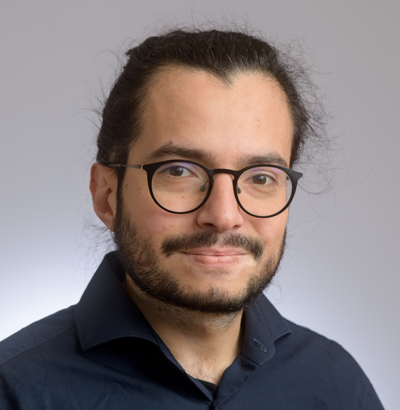Alpha to Tau: Mapping the Neuromechanical Continuum from α-Motor Neuron Firing Behavior to Joint Torque
Antonio Gogeascoechea is a PhD student in the Department of Neuromechanical Engineering. (Co)Promotors are prof.dr.ir. M. Sartori from the Faculty of Engineering Technology and dr. S.U. Yavuz from the Faculty of Electrical Engineering, Mathematics and Computer Science.
 Human movement emerges from the coordinated interaction between the central nervous system (CNS) and the musculoskeletal system. At the heart of this interaction lies the motor unit (MU), the smallest functional entity of musculoskeletal force generation, comprising an α-motor neuron (MN) and the muscle fibers it innervates. While substantial research has been dedicated to both α-MNs and innervated skeletal fibers, the precise mechanisms by which MN activity is converted into skeletal mechanical force remain incompletely understood. An important element hampering progress is the limited understanding of how differences in MU's firing and contractile properties impact musculoskeletal force generation in intact humans in vivo. These variations stem from intrinsic physiological differences among individuals and are further shaped by factors such as physical training, injury, or disease. Therefore, a deeper comprehension of this excitation-contraction coupling and its consequent impact on force capacity is crucial for creating tailored rehabilitation protocols that are finely adjusted to the unique physiological conditions of each individual.
Human movement emerges from the coordinated interaction between the central nervous system (CNS) and the musculoskeletal system. At the heart of this interaction lies the motor unit (MU), the smallest functional entity of musculoskeletal force generation, comprising an α-motor neuron (MN) and the muscle fibers it innervates. While substantial research has been dedicated to both α-MNs and innervated skeletal fibers, the precise mechanisms by which MN activity is converted into skeletal mechanical force remain incompletely understood. An important element hampering progress is the limited understanding of how differences in MU's firing and contractile properties impact musculoskeletal force generation in intact humans in vivo. These variations stem from intrinsic physiological differences among individuals and are further shaped by factors such as physical training, injury, or disease. Therefore, a deeper comprehension of this excitation-contraction coupling and its consequent impact on force capacity is crucial for creating tailored rehabilitation protocols that are finely adjusted to the unique physiological conditions of each individual.
This dissertation introduces novel methodologies to explore the response of α-MNs to external electrical stimuli in incomplete spinal cord injury individuals, and their interaction with muscles to produce mechanical force. This research endeavor aims at reconciling neuronal activity with the resultant musculoskeletal mechanics. Moreover, the techniques proposed are designed with computational efficiency in mind, broadening the horizon for their application in real-time settings.
Our MU-centered approach comprised four main components. First, we decoded MU firing events via high-density electromyography (EMG) decomposition. Second, we sampled temporal and spectral firing characteristics of the sampled MUs in healthy and motor-impaired individuals. Third, we established a link between MU firing patterns and their corresponding twitch responses, which facilitates the creation of MU-specific activation dynamics for individual muscles. This achievement was central for the integration of MU firing function with personalized neuro-musculoskeletal models, thus providing a comprehensive view of the interplay between neuronal and musculoskeletal systems. Fourth, we extended the state-of-the-art decomposition techniques to enrich the identification of MN firing events in high-force contractions and locomotive activities. This breakthrough not only directs our approaches toward tasks that embody the diverse challenges of daily life but also holds profound implications for their application in rehabilitation settings.
In conclusion, our MU-centered techniques provided granular insight into MU function with real-time processing capabilities, thereby setting the stage for the advancement of neuro-restorative devices such as exoskeletons or neuro-prosthetics. Furthermore, by offering a more detailed perspective at the MU level, our methodology allows monitoring variations in statistical distributions of MU characteristics throughout rehabilitation, providing invaluable data that can inform treatment strategies for healthcare professionals.





